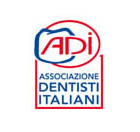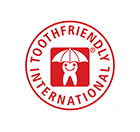Nutrition
We’re committed to good nutrition, high-quality, safe ingredients and a healthy lifestyle.
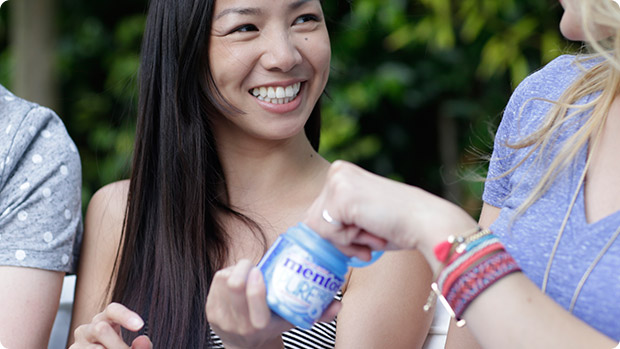
We aim to provide full nutritional information and calorie labelling for our products wherever possible. This goal takes into account that some of our products come in very small packaging with little space for long statements.
Nutritional information is shown in percentages which relate to Reference Intakes (previously known as Guideline Daily Amounts). These are based on the requirements for an adult with no special dietary needs and an assumed energy intake of 2000 kcal.
Colouring
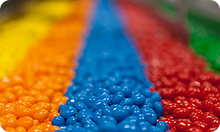 Some of our products do not contain colouring.
Some of our products do not contain colouring.
In coloured products we mostly use natural colouring to give our chewing gums and candies a colour that complements or accents their flavour.
Natural colours are classified by the Federal Drug Administration in the USA as "exempt from certification" colours. They come from a variety of sources, including seeds, roots, vegetables and fruits.
Sometimes, we do use synthetic colours. Food colours are one of the most highly regulated ingredients in our product recipes; we ensure compliance with regulations and colour purity specifications in all the regions in which we operate.
Flavours
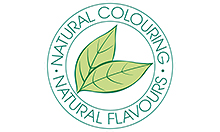 Our chewing gums and candies come in a variety of juicy, fresh, sweet or spicy flavours.
Our chewing gums and candies come in a variety of juicy, fresh, sweet or spicy flavours.
The vast majority of our flavours are from natural sources. They either occur naturally in nature or reproduce flavours that are present in nature. For example, some of our mint flavours (spearmint and peppermint) include oils distilled from mint leaves.
We are committed to increasing the number of products we offer that are formulated with natural flavours. Fruittella candies are a good example of a product line that only uses natural flavours.
Gum base
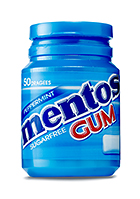 Gum base is an inert and insoluble non-nutritive ingredient which is used to support the edible and soluble parts of chewing gum (sugar, glucose, polyols and flavours). In other words, it’s the chewy bit of the gum that binds together all the other ingredients and gives chewing gum its soft texture.
Gum base is an inert and insoluble non-nutritive ingredient which is used to support the edible and soluble parts of chewing gum (sugar, glucose, polyols and flavours). In other words, it’s the chewy bit of the gum that binds together all the other ingredients and gives chewing gum its soft texture.
In the past, gum base came from natural resins. Today, gum base products are made from synthetic resins and elastomers that provide a longer lasting flavour and improve elasticity and texture. To find out more about gum base, visit our website: www.gumbase.com
Polyols
Polyols (sorbitol, maltitol, xylitol, mannitol and isomalt) are sugar alcohols and replace sugar as a bulking agent in our sugar-free chewing gum and candies.
Polyols are non cariogenic: this means that most of the microorganisms that are naturally present in the mouth do not feed on them when we eat, so preventing the formation of acids that could dissolve tooth enamel.
The EFSA (European Food Safety Agency) has recognised that the consumption of foods and drinks containing polyols instead of sugar contributes to maintaining tooth mineralisation1. The FDA (USA Federal Drug Administration) states that frequently eating food high in sugar and starch between meals can encourage tooth decay. Sugar alcohols may reduce the risk of tooth decay. 2
Excessive consumption of polyols can have a laxative effect. Where products contain more than 10% added polyols you will find the advisory statement "excessive consumption may produce laxative effects".
Softeners
Softeners keep chewing gum soft and flexible. We use glycerine, a neutral thick liquid that retains water in the gum, preventing it from drying out. Vegetable oil products are also used as softeners.
Sugar
In our sugar-based chewing gums and candies, pure sugar (sucrose) and glucose syrup are the key ingredients that sweeten the products. In addition to its sweetening properties, sugar also acts as a bulking agent, giving texture and body to the product.
Sweeteners
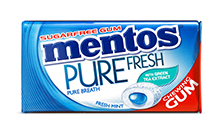 We add intensive sweeteners to our sugar-free products in small quantities to increase their sweetness and ensure long lasting flavour. Acesulfame K, aspartame and sucralose are the most common sweeteners that we use in our sugar-free products. The safety of these substances has been guaranteed by all of the most important food authorities across the world.
We add intensive sweeteners to our sugar-free products in small quantities to increase their sweetness and ensure long lasting flavour. Acesulfame K, aspartame and sucralose are the most common sweeteners that we use in our sugar-free products. The safety of these substances has been guaranteed by all of the most important food authorities across the world.
- EFSA Panel on Dietetic Products, Nutrition and Allergies (NDA); Scientific Opinion on the substantiation of health claims related to the sugar replacers xylitol, sorbitol, mannitol, maltitol, lactitol, isomalt, erythritol, D-tagatose, isomaltulose, sucralose and polydextrose and maintenance of tooth mineralisation by decreasing tooth demineralisation (ID 463, 464, 563, 618, 647, 1182, 1591, 2907, 2921, 4300), and reduction of post-prandial glycaemic responses (ID 617, 619, 669, 1590, 1762, 2903, 2908, 2920) pursuant to Article 13(1) of Regulation (EC) No 1924/2006. EFSA Journal 2011;9(4):2076. [25 pp.]. doi:10.2903/j.efsa.2011.2076.
- FDA, 21 CFR Ch. I (4–1–10 Edition) § 101.80 Health claims: dietary non-cariogenic carbohydrate sweeteners and dental caries.
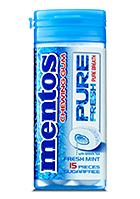 Chewing gum can help oral health and diet.
Chewing gum can help oral health and diet.
Frequent consumption of sugary foods and drinks is the major cause of tooth decay. Eating and drinking between meals can also affect oral health if you do not brush your teeth afterwards.
Good oral hygiene habits are also essential to keep teeth healthy:
- Regular dental check-ups to monitor dental health
- Brushing teeth after every meal
- Using dental floss and/or an interdental brush to better remove plaque and food debris from in between the teeth
Chewing gum not only tastes great, feels good and freshens your breath, it can also deliver proven and important benefits for dental health.
Some of our products have been endorsed for their dental care benefits by the following dental associations:
Healthier teeth
Sugar-free chewing gum has a valuable part to play in oral hygiene, especially after a meal or an ‘on the go’ snack when you are not able to brush your teeth immediately afterwards.
Chewing gum stimulates the production of saliva, which helps to neutralise acids from foods that may contribute to tooth decay. Chewing sugar-free gum has been shown to stimulate the production of saliva by up to ten times the normal un-stimulated rate1. Health and food safety authorities state that chewing sugar-free gum after eating or drinking helps neutralise plaque acids and restore correct acidity levels in the mouth1.
Sugar-free chewing gum also helps maintain dental mineralisation, preserving the integrity of enamel which is essential for healthy teeth. Stimulated saliva can actually help to repair early dental lesions by remineralising the tooth’s surface.
To obtain these beneficial effects, gum must be chewed at least three times a day for 20 minutes.
Some sugar-free chewing gums contain xylitol, a sweetener derived from birch bark. Xylitol has the same sweetening effect as sugar, but its calorie content is 40% lower. Many international studies confirm the positive effect of xylitol on oral health: as it is a non-cariogenic substance it does not encourage tooth decay because it does not lower plaque pH to the level associated with enamel demineralisation.
Whiter teeth
A sparkling smile helps us to communicate and socialise with others. Scientifically proven ingredients like tripolyphosphates and baking soda in some chewing gums contribute to maintaining the natural whiteness of teeth, helping to protect against the formation of stains caused by smoke or drinks like coffee, tea and wine.
A moist mouth
By increasing saliva production, chewing gum reduces mouth dryness and maintains the appropriate level of moisture in the oral cavity.
A healthy diet
 Chewing gum provides sweetness, freshness and taste but has little or no fat and does not contain salt.
Chewing gum provides sweetness, freshness and taste but has little or no fat and does not contain salt.
A piece of sugar-free gum contains, on average, approximately 2 calories. This makes it an enjoyable snack as part of a healthy diet, as it does not contribute significantly to overall daily calorie intake.
In addition, where permitted by national laws and regulations, chewing gum is a useful way to deliver some nutrients. It can easily be administered to children and adults, comes in a variety of flavours and types and can target particular nutritional needs on a local or national basis. For example, chewing gum can supplement calcium and fluoride in the diet, helping to improve dental health, or provide vitamin C which helps the immune system to function properly.
We are committed to improving our existing products and future innovations in line with major public health challenges.
A healthy lifestyle requires a balanced diet and an appropriate calorie intake. Sugar plays an important role in contributing to the required energy intake, which is necessary for our bodies to work properly. It is important to get the balance right to ensure we have enough energy for our activities and are not over-storing sugar supplies. Indeed, high sugar intake and obesity have been linked to diseases such as diabetes and heart disease.
The World Health Organisation is preparing a new guideline that will provide countries with recommendations on limiting the consumption of sugars to reduce public health problems like obesity and dental caries. WHO’s current recommendation, from 2002, is that sugars should make up less than 10% of total energy intake per day. The new draft guideline suggests that a reduction to below 5% of total energy intake per day would have additional benefits. Five per cent of total energy intake is equivalent to around 25 grams (around 6 teaspoons) of sugar per day.
Sugar content in PVM candies and chewing gums
A single piece of our sugar based candies and chewing gums adds a very limited calorie intake to our diet.
Most candies have a light weight per piece: for example, a single Mentos candy weighs approximately 3g and delivers 1.9g sugar, equal to 7.6 kcal, accounting only for 0.4% of a 2000 kcal daily energy intake.
In order to help consumers reduce their calorie intake, we have introduced smaller packaging and increased the offer of single-portion packs.
Our Research and Development staff is also working on new formulations with less sugar content than the original candies.
Sugar-free candies and chewing gums
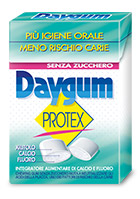 We offer a wide range of sugar-free products that not only taste great but have no sugar and fewer calories than sugar-based products . These Sugar free chewing gums and candies contain sugar alcohols (like maltitol, sorbitol and isomalt) instead of sugar; these sweeteners contain 40% less calories than sugar.
We offer a wide range of sugar-free products that not only taste great but have no sugar and fewer calories than sugar-based products . These Sugar free chewing gums and candies contain sugar alcohols (like maltitol, sorbitol and isomalt) instead of sugar; these sweeteners contain 40% less calories than sugar.
This means that we can satisfy our desire for sweet things without having to worry about the calories.
We support scientific research on confectionery in direct cooperation with key universities, scientific boards and institutes.
The intention of this section is in no way, shape or form to advertise any product. We simply intend to provide a quick overview of some of the most important topics in chewing gum research. For further reference, please see the links to a choice of key papers.
Oral care with sugar-free confectionery
After the consumption of sugar, acids produced by plaque bacteria attack tooth enamel thereby compromising dental health. Sugar-free confectionery products, developed in the late twentieth century, aimed to eliminate the drawbacks of sugar and promote oral health, while keeping all the fun and taste of traditional confectionery.
Today, in sugar-free confectionery polyols are replacing sugar since, unlike sugar, they are not fermentable by oral bacteria and do not favour plaque acidification. This property was confirmed using “telemetry”, a technique that monitors the change of plaque pH during and after food consumption1. Telemetry is the most appropriate technique to assess products as “safe for teeth” and eligible to bear the “happy teeth” logo of the Tooth-friendly International.
Chewing sugar-free gum stimulates the production of saliva 32 which helps neutralize pH and re-mineralize tooth enamel, thus reducing the risk of new caries3
- Imfeld T. Interdental plaque-pH-telemetry. IRL Press ltd 1982;Surface and Colloid Phenomena in the Oral Cavity: Methodological Aspects. Proceedings of a workshop on saliva-dental plaque and enamel surface interactions.(R.M. Frank and S.A. Leach eds.).
- Dawes C, Dong C. The flow rate and electrolyte composition of whole saliva elicited by the use of sucrose-containing and sugar-free chewing-gums. Arch Oral Biol 1995;40(8):699-705.
-
Deshpande A, Jadad AR. The impact of polyol-containing chewing gums on dental caries: a systematic review of original randomized controlled trials and observational studies. J Am Dent Assoc 2008;139(12):1602-14.
Particularly interesting is the effect of xylitol, a polyol that is able to hamper the growth of Streptococcus mutans4-5 (an oral bacteria specifically associated with caries). It also favours enamel re-mineralisation when combined with calcium6. Proof exists that chewing gum containing xylitol reduces plaque7 as well as plaque’s capacity to generate acid8, thus decreasing the number of new caries9 (PVM sponsored research).
- Milgrom P, Ly KA, Roberts MC, Rothen M, Mueller G, Yamaguchi DK. Mutans streptococci dose response to xylitol chewing gum. J Dent Res 2006;85(2):177-81.
- Ly KA, Milgrom P, Roberts MC, Yamaguchi DK, Rothen M, Mueller G. Linear response of mutans streptococci to increasing frequency of xylitol chewing gum use: a randomized controlled trial [ISRCTN43479664]. BMC Oral Health 2006;6:6.
- Makinen KK. Sugar alcohols, caries incidence, and remineralization of caries lesions: a literature review. Int J Dent 2010;2010:981072.
- Wang YB, Chuang CY, Liao JF. Effects of xylitol in chewing gum on dental plaque and Streptococcus mutans J. Food Drug Anal. 2006;14(1):84-88.
- Campus G, Cagetti MG, Sacco G, Solinas G, Mastroberardino S, Lingstrom P. Six months of daily high-dose xylitol in high-risk schoolchildren: a randomized clinical trial on plaque pH and salivary mutans streptococci. Caries Res 2009;43(6):455-61.
-
Campus G, Cagetti M, Sale S, Petruzzi M, Solinas G, Strohmenger L, et al. Six months of high-dose xylitol in high-risk caries subjects—a 2-year randomised, clinical trial. Clinical Oral Investigations 2012:1-7.
Fresh breath
Chewing gum can help maintain fresh breath. Fresh breath is among the main drivers for consuming mint-flavoured chewing gum. In standard mint gum, menthol delivers a sensation of freshness and increased air flow, while its flavour perfumes the breath. The cooling sensation comes from the interaction of menthol with cold receptors in the oral10-11 and nasal12 mucosa: this means that the mouth feels cooler, even though the temperature is not really changing.
In addition, chewing gum can deliver functional ingredients targeting bad smelling compounds such as volatile sulphur compounds (VSC) naturally produced by oral bacteria. PVM-sponsored research demonstrates that the breath of volunteers chewing a standard sugar-free gum has lower volatile sulphur compounds immediately after chewing (VSC, bad smelling molecules). Saliva stimulation is the probable cause of this effect. In the same test, when magnolia bark extract and zinc acetate are added to chewing gum, a more intense effect is obtained, lasting up to one hour after chewing13. In this test gum is used to deliver specific functional ingredients, in fact zinc may directly bind to VSC, while magnolia bark extract may interact with bacteria responsible for VSC production.
- Schäfer K, Braun H, Isenberg C. Effect of menthol on cold receptor activity. Analysis of receptor processes. The Journal of general physiology 1986;88(6):757-76.
- Swandulla D, Schäfer K, Lux H. Calcium channel current inactivation is selectively modulated by menthol. Neuroscience letters 1986;68(1):23-28.
- Eccles R. Menthol: effects on nasal sensation of airflow and the drive to breathe. Curr Allergy Asthma Rep 2003;3(3):210-4.
-
P. F. Porciani, Grandini S. The effect of zinc acetate and magnolia bark extract added to chewing gum on volatile sulfur-containing compounds in the oral cavity. J Clin Dent 2012;23(3):76-79.
White teeth
In modern developed societies, having white teeth is of primary social importance. Dental stains can become a significant cosmetic problem for many people. Chewing sugar free gums can be beneficial in preventing chlorhexidine-induced stains14. In a recent clinical trial, chewing gum containing tripolyphosphates15 reduced tooth stain better than a placebo sugar-free gum (PVM sponsored research). Tripolyphosphate, in fact, can bind to teeth enamel and desorb proteins and stain deposits16.
- Yankell SL, Emling RC. Efficacy of chewing gum in preventing extrinsic tooth staining. J Clin Dent 1997;8(6):169-72.
- Porciani PF, Perra C, Grandini S. Effect on dental stain occurrence by chewing gum containing sodium tripolyphosphate--a double-blind six-week trial. J Clin Dent 2010;21(1):4-7.
-
Shellis RP, Addy M, Rees GD. In vitro studies on the effect of sodium tripolyphosphate on the interactions of stain and salivary protein with hydroxyapatite. J Dent 2005.
Psychological benefits
There are frequent reports on the positive effect of chewing gum in coping with stressful situations or in keeping focus and concentration. From a scientific standpoint, the absolute pioneer in this field was Hollingworth (1939)17, but most papers in this field saw publication during the last decade. For a review see Allen & Smith (2011)18. A consistent number of papers have been published afterwards19-20.
- Hollingworth HL. Chewing as a technique of relaxation. Science 1939;90(2339):385-7.
- A. P. Allen, Smith AP. A Review of the Evidence that Chewing Gum Affects Stress, Alertness and Cognition. Journal of Behavioral and Neuroscience Research 2011;9(1):7-23.
- Erbay FM, Aydin N, Sati-Kirkan T. Chewing gum may be an effective complementary therapy in patients with mild to moderate depression. Appetite 2013.
-
Hirano Y, Obata T, Takahashi H, Tachibana A, Kuroiwa D, Takahashi T, et al. Effects of chewing on cognitive processing speed. Brain and Cognition 2013(0).
Other
Investigation on the effect of chewing gum in other conditions and research fields such as in post-operative ileus21-22, masticatory performance23 or brain behaviour24-257 is also noteworthy.
- Alfonsi P, Slim K, Chauvin M, Mariani P, Faucheron JL, Fletcher D. French guidelines for enhanced recovery after elective colorectal surgery. J Visc Surg 2014;151(1):65-79.
- Zhu YP, Wang WJ, Zhang SL, Dai B, Ye DW. Effects of gum chewing on postoperative bowel motility after caesarean section: a meta-analysis of randomised controlled trials. BJOG 2014.
- Hama Y, Kanazawa M, Minakuchi S, Uchida T, Sasaki Y. Properties of a color-changeable chewing gum used to evaluate masticatory performance. J Prosthodont Res 2014.
- Bracco P, Anastasi G, Piancino MG, Frongia G, Milardi D, Favaloro A, et al. Hemispheric prevalence during chewing in normal right-handed and left-handed subjects: a functional magnetic resonance imaging preliminary study. CRANIO® 2010;28(2):114-21.
- G. Anastasi PB, M.G. Piancino, G. Isola, G. Vaccarino, G. Santoro, A. Favaloro, C. Milazzo, D. Buda. fMRI study in human brain during chewing. It. J. An. Embr. 2013;118(2 (S)):12.

